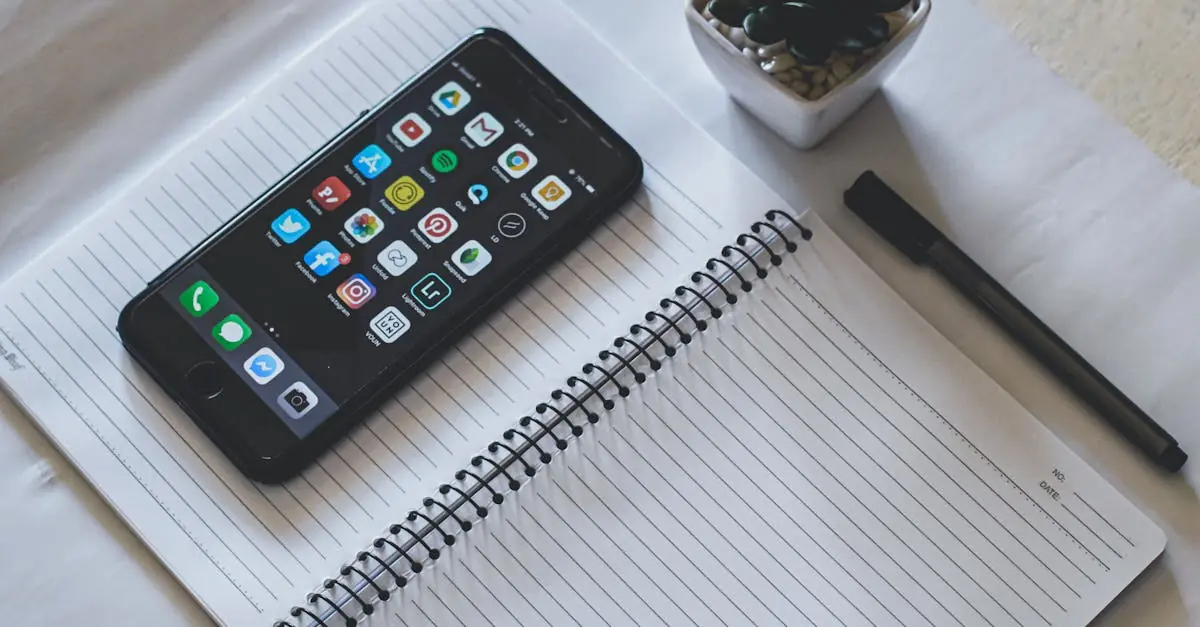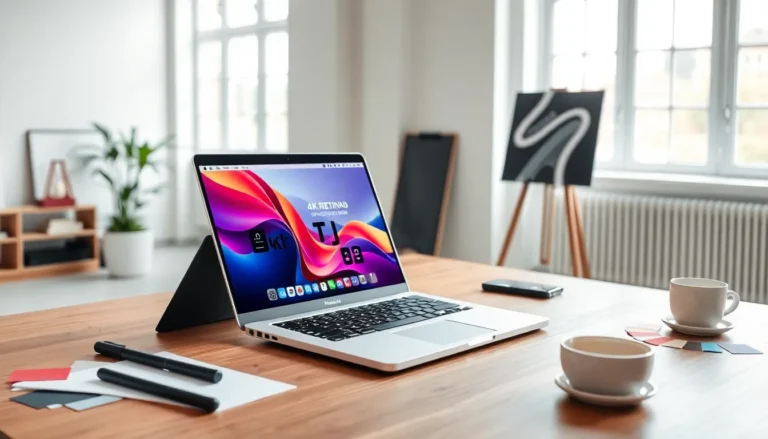In a world where apps multiply faster than rabbits, keeping your iPhone 14 organized can feel like herding cats. Whether you’ve downloaded that one game you swore you’d play or an app that promised to change your life but turned out to be a digital paperweight, it’s time to reclaim your screen space.
Table of Contents
ToggleOverview of App Deletion on iPhone 14
Deleting apps on an iPhone 14 enhances organization and frees up valuable storage. Users often accumulate numerous apps, leading to clutter on the home screen. Find clarity by removing unwanted or unused applications.
The app deletion process provides multiple methods. One straightforward approach involves long-pressing the app icon. A context menu appears, offering options to delete or edit the home screen layout. Selecting “Remove App” initiates the deletion process.
Another method requires navigating through the Settings app. Users access Settings, then tap on “General” followed by “iPhone Storage.” This section displays all installed apps, showcasing their storage usage. Tapping on an app reveals the option to delete it easily.
Keep in mind that eliminating an app removes its data. Apps with significant data may require confirmation before deletion. Users manage their storage efficiently by understanding which apps consume space.
Temporary storage can also impact performance. Regularly deleting apps prevents the device from slowing down. This practice promotes optimal performance, contributing to a smoother user experience.
Maintaining an organized space cultivates a better app experience. An uncluttered interface allows for quicker access to necessary apps. It simplifies navigation and reduces frustration.
Utilizing these techniques makes it easy to remove unwanted apps from the iPhone 14. Each deletion adds to an organized layout, ultimately leading to a more user-friendly device. By prioritizing app management, users enjoy a well-organized digital environment.
Methods to Delete Apps
Deleting apps from an iPhone 14 can streamline organization and improve storage efficiency. Here are effective methods for removing apps.
Deleting Apps Using the Home Screen
Removing apps directly from the home screen is straightforward. Long-press the app icon until a menu appears. Tap “Remove App,” then select “Delete App” to confirm the action. The app and its data will be permanently deleted. This method provides an immediate way to declutter without navigating away from the home screen.
Deleting Apps Through Settings
Navigating through the Settings app also allows for app deletion. Open the Settings app and select “General,” then choose “iPhone Storage.” A list of installed apps appears, along with storage usage information. Tap the app you’d like to delete, then select “Delete App” to finalize the removal. This method facilitates managing multiple apps and understanding how they impact overall storage.
Tips for Managing Apps
Effective app management on the iPhone 14 simplifies navigation and enhances user experience. Users can utilize strategies that streamline access to essential applications.
Organizing Your Home Screen
Arranging apps on the home screen leads to a more intuitive layout. Create folders for categories like Social Media, Productivity, and Entertainment. Placing frequently used apps in the dock provides quick access. Periodically reviewing which apps remain on the home screen keeps it clutter-free. Moving less-used apps to the second page maintains a clean first page appearance. Prioritize essential apps so they stand out, making the overall experience smoother.
Using App Library Effectively
The App Library automatically organizes apps into categories, enhancing efficiency. Users can quickly search for apps without sifting through multiple screens. Navigating to the App Library involves swiping left past the last home screen page. Frequently used apps appear prominently, providing easy access. Users can also hide apps from the home screen while keeping them in the App Library. This feature helps declutter while retaining access to less frequently used apps when needed.
Common Issues When Deleting Apps
Users encounter various issues when attempting to delete apps from the iPhone 14. First, apps may not seem to delete even after following the standard procedures. This lack of action may originate from system glitches or insufficient storage space, which can impact app management.
Some users experience difficulties when apps refuse to move to the “Remove App” option. This issue often occurs when a user tries to delete multiple apps simultaneously or if the iPhone’s software requires an update. Regular updates prevent such problems and enhance overall performance.
Another common problem arises from the accidental deletion of critical apps. Often, users overlook the implications of removing default apps like Mail or Safari. These apps may seem unnecessary, but they perform essential functions and can affect system operation when deleted.
Storage management can also lead to confusion. Users may believe that deleting an app frees up substantial space, but residual files may remain. It’s crucial to check storage usage after deletion, ensuring complete removal of both the app and any associated data.
Occasionally, users face frustration related to app permissions. Certain applications may not delete due to restrictions set by parental controls or device settings. Adjusting these settings resolves the issue and enables a smoother deletion process.
Lastly, some apps reinstall automatically after deletion. Installed profiles or certain app settings may prompt automatic downloads when reconnecting to Wi-Fi. Users should manage their app preferences to avoid this situation and maintain desired app organization on their home screens.
Deleting apps from an iPhone 14 is a straightforward process that can significantly enhance organization and performance. By utilizing methods like long-pressing app icons or accessing the Settings app, users can easily manage their digital space. Regularly removing unwanted apps not only declutters the home screen but also frees up valuable storage.
Maintaining a well-organized app layout contributes to a smoother user experience. By creating folders and utilizing the App Library feature, users can streamline their access to essential apps. Staying proactive about app management ensures the iPhone remains efficient and personalized to individual needs.





